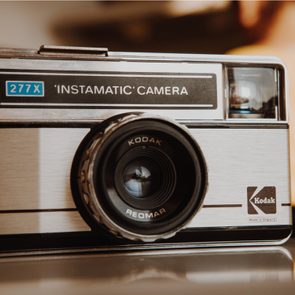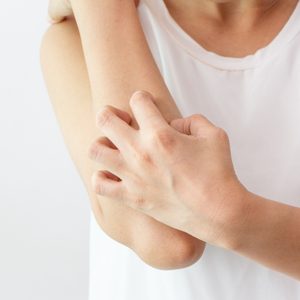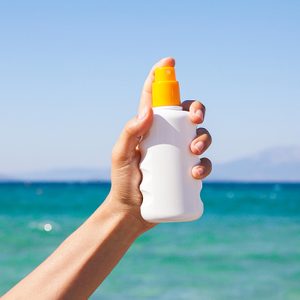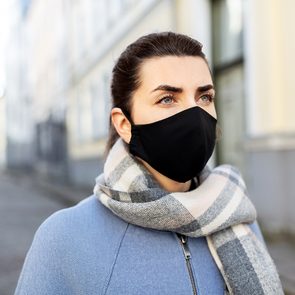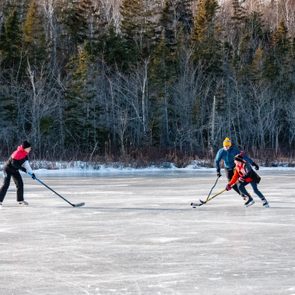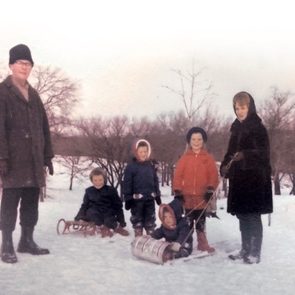In the winter of 1985, my sister, Drazenka, and I were just teenagers when we were walking from our village in the former Yugoslavia to visit our mom in the nearest town. We were poorly dressed for the harsh weather, wearing only jean jackets with blouses underneath. As it was dark and snowing heavily, we got lost in a canyon. No one knew we were missing as our mom didn’t think we’d attempt the trek in a snowstorm and our dad had assumed we arrived. There were no cell phones then, so we couldn’t tell anyone that we were lost.
After seven days without food or sleep, we decided to recite our last prayer. At this time, we heard a group of hunters nearby and I called out to them. We were rescued later that day and taken to the hospital. Drazenka and I had frostbite and an infection in our lungs. In order to save our lives, doctors had to amputate both of our legs below the knee.
Our story captured media attention and strangers lined up around the hospital to give us their well wishes. The encouragement and positivity from the community helped both Drazenka and me tremendously in our recovery.
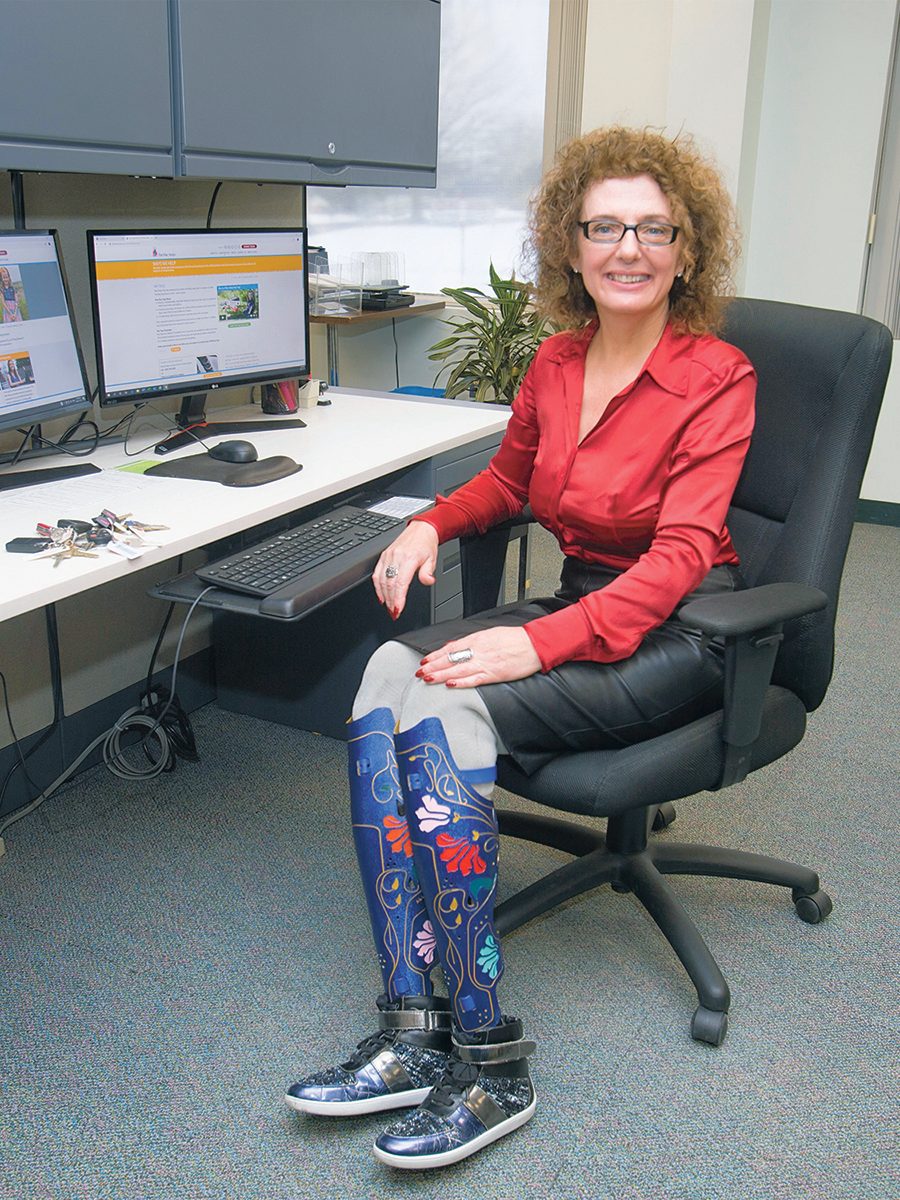
In 1990, my husband and I moved to his native Canada. Not knowing English and being a double-leg amputee, I wondered how I was going to find a job. My husband told me about The War Amps Key Tag Service, a lost-key return service that employs amputees and people with disabilities in Toronto. We knocked on their door and staff member Rob Larman, a leg amputee himself, welcomed us. Rob offered me a job on the spot and when he asked when I wanted to start, I said “tomorrow.”
I began working in production, stuffing envelopes for mailing, which is also where I learned to speak English. Today, I’m an assistant supervisor in the remittance/processing department, where I train employees and oversee the donations that come in.
The War Amps Key Tag Service was started in 1946 so that war amputee veterans could work for competitive wages and provide a service to Canadians that would generate funds for the association.
The War Amps is my second home and family. As many of my co-workers are amputees, we share a special bond. There’s a lot of mutual support and we show one another that the sky is the limit.
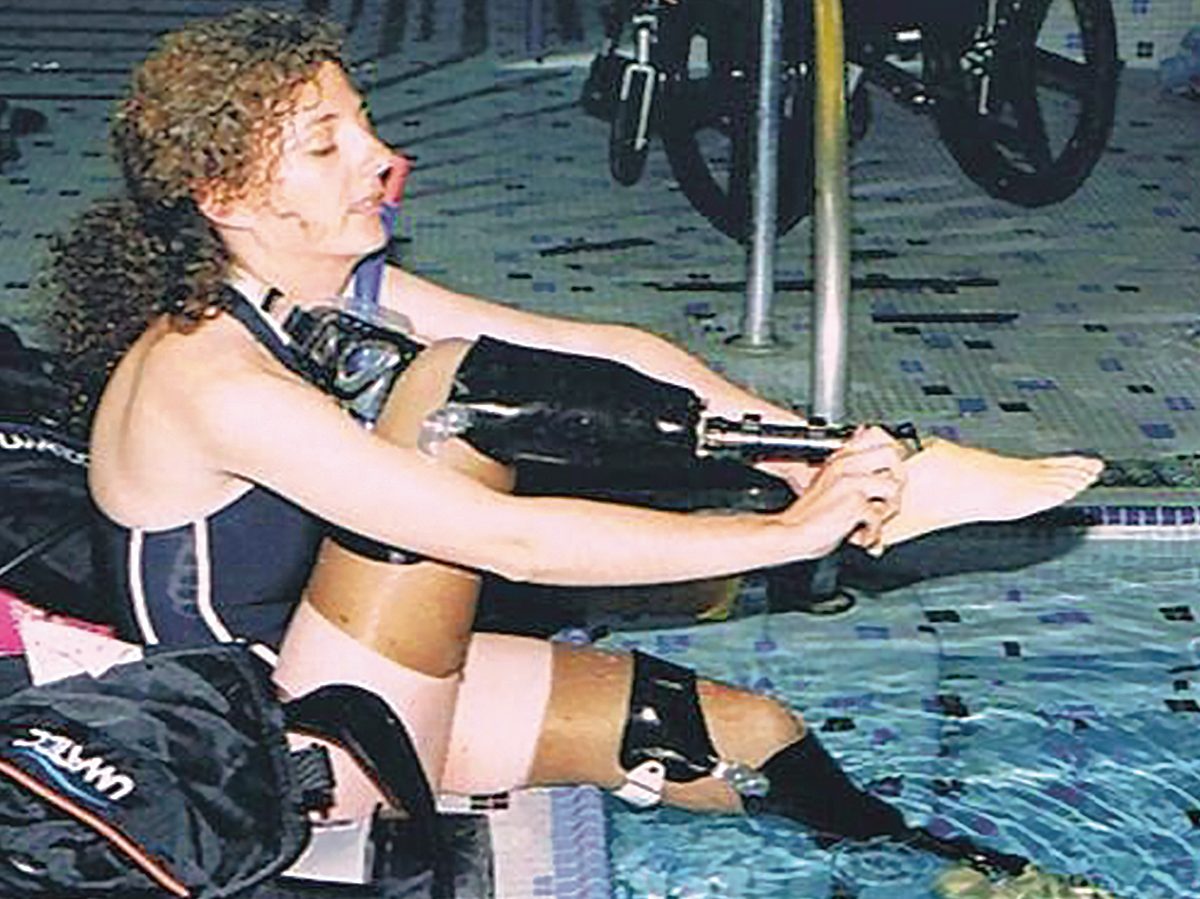
I have always loved the water. It relaxes me and clears my mind, but I didn’t think I could swim until another leg amputee at work told me that they were going scuba diving. Today, I swim and take part in all sorts of activities such as sailing, yoga, dancing and bowling.
People are often surprised to learn that I’m missing both of my legs because they don’t expect a double-leg amputee to be wearing four-inch heels! A coworker of mine who recently lost her leg was shocked when I revealed to her that I’m an amputee. She said that she had thrown away all her high-heel shoes because she didn’t think she could wear them again. After seeing me, she realized that it is possible.
It’s rewarding to work for an organization that is making a difference in the lives of Canadian amputees by providing financial assistance for the cost of artificial limbs, advocating for the rights of amputees and providing employment.
It also means a lot to me that I’m helping other amputees realize that an amputation isn’t a barrier to living a full and active life. I feel fortunate to have come to Canada, an incredible country, where I found my purpose and second family. My life has truly come full circle.
Next, read the incredible story of how a small Saskatchewan community rallied to save the life of an unborn baby.
Beware Winter Rays
The prevalence of melanoma has been rapidly rising around the world for nearly a century. In the 1930s, the chance of an American getting melanoma was one in 1,500. Today it’s one in 74. In the U.K., melanoma rates have tripled since the 1990s alone.
While some of the increase may be due to better detection, researchers also believe it’s because we’re spending more time outdoors in the sun, vacationing to warmer climates during the winter and using tanning beds.
That rise is concerning, since melanoma is the most dangerous kind of skin cancer. Non-melanoma types, like basal cell carcinoma, rarely spread to other parts of the body and are often resolved by localized surgery. Melanoma, on the other hand, is far more likely to spread and be deadly. In the U.S., it makes up only one percent of diagnosed skin cancers but causes the most deaths of them all.
There are a few main risk factors for melanomas, including how much cumulative sun exposure a person has had in his or her life—and how many sunburns. It’s thought to develop when the sun’s carcinogenic UV rays damage the cells that make the pigment in your skin. That’s why people who have fair skin are at a higher risk of getting it, along with anyone with a family history of skin cancer.
Most of us know to cover up and apply sunscreen on hot, sunny days, but when fall arrives, we tend to drop those habits. Experts warn that’s a mistake. Though there’s less need for sun protection after summer ends, exposure to UV rays still adds up.
What precautions you should take to defend against melanoma during the cooler months depends on where you are in the world. That’s because the further away you are from the equator, the more UV rays weaken in the winter. “In southern England or Canada, the daily dose of UVA on a clear summer day is 6.5 times higher than on a clear winter day,” says Professor Brian Diffey of the British Association of Dermatologists. “People in those countries typically receive only about five percent of their annual UV exposure in the winter months.”
But no matter where you are, even during colder, lower risk months, it’s a mistake to put your sun-protection habits on ice. “It’s important to wear sunscreen when there is a lot of glare from the snow,” says Victoria Mar, director of the Victorian Melanoma Service at Alfred Hospital in Melbourne, Australia.
If you’re tobogganing, skiing or skating, the ice and snow reflect up to 80 percent of the sun’s rays back at you, increasing your sun risk to summertime levels. And if you’re outside during the day for an hour or more doing any activity, you should take precautions: wear a hat and put on sunscreen. “To make it simpler to remember, make sunscreen part of your morning routine before going out,” advises Mar.
Finally, you should monitor your moles. “Early detection of melanoma is vital for successful treatment,” says Diffey. If it’s caught before it spreads to other parts of the body, the five-year survival rate is 99 percent. If it’s caught late, that can drop to 25 percent. Warning signs are a mole that’s changing size, shape or colour, or one that’s asymmetrical—sometimes referred to as “ugly duckling” moles.
If you have concerns, talk to your doctor. And in the meantime, practise healthy sun habits—even when it’s cold outside.
Next, learn about 30 cancer symptoms you should never ignore.
The COVID-19 pandemic has presented a unique challenge for those sporting face fuzz: namely, finding a mask that provides full beard coverage. Although a little bit of scruff isn’t going to prevent a conventional face mask from fitting nicely under the chin, that’s exactly where the more hirsute have a problem—and a Canadian company has just come up with a solution.
The Beard Tarp is the latest innovation from Barrie, Ontario-based men’s lifestyle brand, Always Bearded. Like the face masks recommended by Canada’s most recent public health guidelines, the 100% cotton Beard Tarp provides three layers of protection, plus an additional Hydroknit filter which is disposable after each use. What sets it apart, however, is its three-dimensional design, which provides unrestricted protection of even the bushiest beard.
“At a time when masks are mandatory or highly recommended in many jurisdictions, the Beard Tarp is the only option for the bearded,” says Always Bearded founder, Sven Hansen.
Instead of elastics over the ears—a common complaint among those who find conventional face masks uncomfortable—the Beard Tarp is tightened from behind by a toggle. Around the front, an aluminum nose bridge—which can be removed when it’s time to hand-wash the mask—helps to ensure a snug seal, and keeps foggy glasses to a minimum.
Although the standard Beard Tarp ($30) should keep most beards contained, particularly prodigious growth may require a larger version ($35). Shipping across Canada is free on orders over $50.
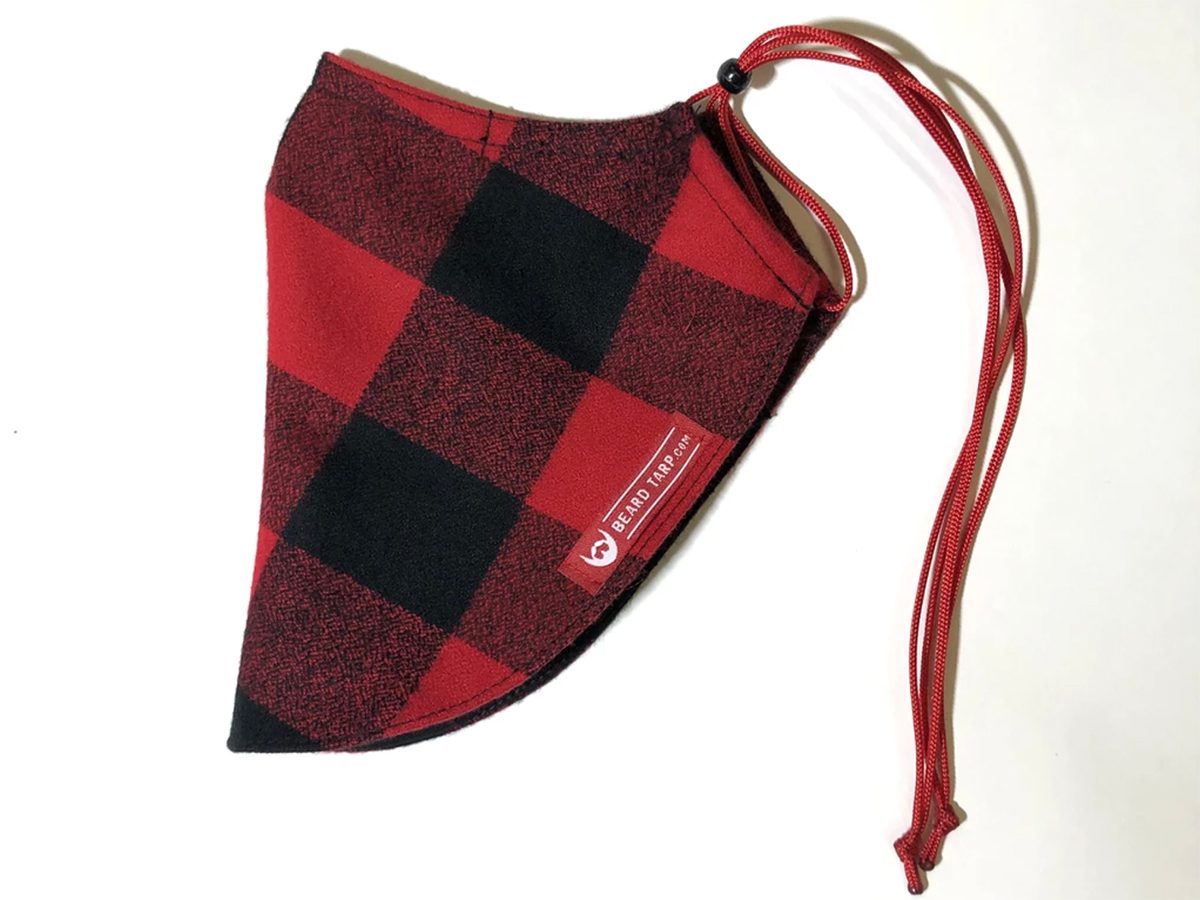
Although the Beard Tarp is available in a variety of patterns, it’s the Buffalo Check (above)—a holiday season exclusive—that’s tailor-made as a stocking stuffer. Check out 50 more inspired Canadian gift ideas here.
Jagger Gordon was standing in line at the grocery store in late March when it hit him: this was only the beginning. The 50-year-old chef and founder of Toronto’s Feed It Forward, one of the country’s most innovative food bank programs, saw that COVID-19 would have an even bigger impact on communities that depend on his services. “People were fighting over water,” he says, “and I just thought, okay, this is going to be bad.”
Gordon is like a modern-day Robin Hood, only instead of robbing from the rich, his food bank rescues food that would otherwise be destined for landfills. He launched Feed It Forward six years ago, hoping to ameliorate hunger by making a dent in the approximately 11 million tons of food that Canadians annually let go to waste. The food he rescues is still edible but may not meet the picture-perfect standards of consumers. Don’t even get Gordon started on overly aggressive best-before dates. “This is perfectly good stuff!” he says. “Maybe a pepper has a slight blemish, or it’s not breast meat or whatever the desired cut is, but you can still make something that tastes amazing.” Operating out of three main kitchens with some 2,200 volunteers, the organization was, until recently, feeding approximately 3,000 people every day. Since COVID, it’s closer to 5,000.
Feed It Forward runs a pay-what-you-can restaurant and grocery store stocked entirely with hand-me-downs from Whole Foods (some 400 kilograms every day). Thirty-two Toronto-area restaurants and food supply companies—Sysco, for example—also help out. On 200 acres in Whitby, Ont., Feed It Forward grows produce and hosts grow-your-own-food lessons for individuals and families. If the pandemic hadn’t cancelled in-person classes, this fall would have meant resuming Soup Bar, an offshoot program that provides free hot meals to students at Humber College (more than a third of post-secondary students live with food insecurity). People have an idea of what a person who is hungry looks like, says Gordon, but it’s so much more prevalent than we realize.
Hunger Gains
Feed It Forward couldn’t exist if the Ontario government hadn’t passed 1994’s Donation of Food Act, which allows individuals and companies to provide organizations with excess or unused stock without fear of liability. But Gordon says we can still do better. In France, for example, it’s illegal for large supermarkets to throw away food that could otherwise be donated. In 2016, Canada’s NDP agriculture critic Ruth Ellen Brosseau introduced a private member’s bill to develop a national strategy on food waste, but it was defeated.
Experts predict the number of people who are food insecure to have doubled this year—but Gordon hopes that the spotlight the pandemic has put on food distribution systems and scarcity will lead to meaningful change. In the early days of the lockdown, Gordon heard from staff in the kitchens at Rogers Centre, the CN Tower, the Ontario Food Terminal and hundreds of other businesses—all of them had food to give and knew Gordon was the guy who would know what to do with it.
As the year came to an end, Feed It Forward was stockpiling turkey. In previous years, the organization hosted holiday dinners—community celebrations with live music and, of course, plenty of good food. This year will be different—less gathering and more special deliveries. So maybe Gordon is less like Robin Hood and more like Santa. “There is need out there, and we can meet it,” he says. “That’s my mission.”
Next, read about how this doctor helps breast cancer patients prepare for treatment.
On Christmas Eve for many years now, I’ve been hanging little home-made decorations on the door handles of all 238 units in my condo. I received permission from the board members for this as I began retirement, and it’s been going on for 24 years. At first, I started with just two mini candy canes, which went on for a few years. After that, I began placing the two canes into stockings, to act as angel wings and antlers for reindeers. It was my attempt at sprucing up the Christmas spirit around the building.
I then switched to using the two canes as a ‘hanger’ on which to dangle the decoration. By taping the bases together and spreading the curved heads downward, you get a good hanger hook, which I drape over the door handles via a wire loop threaded between the canes.
This opened up more possibilities such as trees, toboggans, tuques, wrapped gifts, various angel and Santa designs and much more. Thanks to my hanger design, they could all be suspended from the canes. The decorations are small products from my imagination, suitable for any sized tree, and are made mainly from scraps and donated materials.
For several years, few people knew who made and delivered these and I was dubbed “the Christmas Elf.” I try to avoid being seen as I make my way along the corridors but now and then I’m caught before I can duck into the stairwell.
To make things easier, I craft the decorations ahead of time and then get them out of storage boxes in batches of 12—the number of units on each floor. After dealing with tangled canes on many occasions, I now use cookie sheets or trays to lay out the 12 needed. I put these in the bathtub enclosure, on high shelves, or in the closet until Christmas Eve as I have a curious cat eager to help!
I start at the top of the building and carry four or five trays up on the elevator, put them in the stairwell and work my way down. When I need a new set, I go back to my unit to reload. It takes about two hours to complete the task, but I enjoy the challenge of trying to go unseen and the pleasure of creating the decorations. It’s a surprise for new residents and something to look forward to for long-timers—smiles for all!
I make similar decorations for the Christmas luncheon, the seniors’ choir and of course, the hospital volunteers’ gathering. The leftovers usually find their way to the crafting table at our church bazaar, except for one sample that sits in the trophy case in our condo games room, as a little piece of history.
This elf may wear a mask this year but I will continue delivering decorations now that I’ve “got the hang of it!”
Next, find out what a country Christmas was like in the 1950s.

Girls’ Club
Some folks spend decades looking for their people, their best friends, the crew that really gets them. I was lucky enough to find mine in Grade 7 at Glenview Senior Public School in north Toronto—eight tween girls turned one brace-faced hive mind.
As we progressed to high school, a couple of girls dropped out and a couple of new ones wormed their way in. By the end of Grade 12, the group had more or less coalesced into its final form, one that’s remained remarkably intact for the past 20-odd years.
Among our many traditions is an annual Christmukkah exchange. This event first took place when we were 12 and newly empowered to shop without our parents at Yorkdale Mall. We set it up on the long, sticky cafeteria tables at our school, choosing names out of a Tupperware container and swapping modest gifts we’d bought with our babysitting money. In subsequent years we’d make a night of it, watching movies and ordering pizza in parents’ living rooms, eventually segueing into our own shabby student apartments, then into slightly less shabby adult apartments and finally into our first homes.
At the beginning, we gave each other butterfly hair clips and Spice Girls Chupa Chups that we’d purchased at Ardene. Those gave way to gaudy mall jewellery and satsuma lotion gift sets from The Body Shop in our teens, cheerful housewares as we began nesting in our 20s and baby clothes once we started having kids in our 30s.
Once, I received a scented candle in an antique teacup from my friend’s partner, Steve—only to receive a near-identical teacup candle the following year from Sara, who’d missed the previous exchange (apparently, I give off a Victorian grandma vibe). But my favourite gift by far was the one I received two years ago. That time, we’d gathered at Lauren’s house, and Abra—whom I’ve known since birth—commissioned a custom cross-stitch kit that depicted all the members of the group.
Holidays with family can be cozy, but our exchange offered something else: a chance for my friends and me to create our own traditions and play at being grown-ups. We got to plan and fuss and cook for ourselves, setting up the kinds of ritualized joy that have kept us bonded. And now, so many years later, it’s also a time when we get to revert to the goofy, giddy girls we once were.
Next, read up on these uniquely Canadian holiday traditions.


